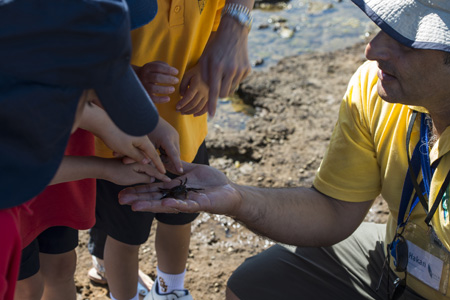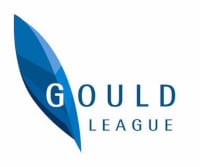Intertidal Food Webs and Classification
-
Biodiversity
-
Classifications
-
Food webs
-
Trophic levels

Program Overview
The intertidal platform of Ricketts Point Marine Sanctuary is home to a variety of algal and invertebrate species. Students will have the opportunity to observe the characteristics of these organisms and discover how such features are used to classify species. Students will be introduced to the use of dichotomous keys and hierarchical systems of classification.
The relationships between organisms on the intertidal platform will also be highlighted by constructing a food web. Observations of human activities within the marine sanctuary will demonstrate to students how fragile food webs can easily be impacted by our actions.
Program Inclusions
Your program includes:
- Overview of Victoria’s Marine National Parks systems and the role they play in the protection of Victoria’s marine biodiversity.
- Introduction to the physical characteristics and organisms of the intertidal zone.
- Discussion of the importance of classification and an introduction to classifying organisms using hierarchical systems.
- Examination of specimens to identify classification characteristics of marine invertebrate phyla.
- Field observation of the intertidal zone, including identification of common algal species using a dichotomous key.
- Construction of an intertidal food web and examination of relationships between organisms within the intertidal zone.
- Observation of human activities within the marine sanctuary and discussion of potential impacts on marine ecosystems and species relationships.
Restrictions: Delivery of the program is tide dependent. Please provide alternative dates that spread across at least two weeks.
Prior Knowledge required: Some understanding of trophic levels and food webs. Familiarity in the use of dichotomous keys, species identification charts and scientific nomenclature.
Equipment needed: A copy of workbook, clipboard and pencil per student. Appropriate clothing and footwear (long sleeve top, long pants, jacket, hat/beanie, soft-soled shoes e.g. runners).
Equipment supplied by Gould League: Dichotomous keys, species identification charts.
Victorian Curriculum Links
SCIENCE: Science Understanding
Science and technology contribute to finding solutions to a range of contemporary issues; these solutions may impact on other areas of society and involve ethical considerations (VCSSU090)
– investigating strategies implemented to maintain part of the local environment, such as bushland, a beach, a lake, a desert or a shoreline
There are differences within and between groups of organisms; classification helps organise this diversity (VCSSU091)
– grouping a variety of organisms on the basis of similarities and differences in particular features
– classifying using hierarchical systems, for example, kingdom, phylum, class, order, family, genus, species using scientific conventions for naming species
– using provided keys to identify organisms surveyed in a local habitat
Interactions between organisms can be described in terms of food chains and food webs and can be affected by human activity (VCSSU093)
– constructing and interpreting food chains and food webs to show relationships between organisms in an environment
– recognising the role of microorganisms within food chains and food webs
– researching examples of human impacts on specific ecosystems, for example, the use of fire by traditional Aboriginal people, the effects of palm oil harvesting, deforestation, agricultural practices or the introduction of new species
Multicellular organisms contain systems of organs that carry out specialised functions that enable them to survive and reproduce (VCSSU094)
– examining the specialised cells and tissues involved in structure and function of particular organs
– describing the structure of each organ in a system and relating its function to the overall function of the system
– identifying the organs and overall function of a system of a multicellular organism in supporting life processes
– comparing reproductive systems of organisms
– comparing similar systems in different organisms, for example, digestive systems in herbivores and carnivores, respiratory systems in fish and mammals
SCIENCE: Science Inquiry Skills
– Identify questions, problems and claims that can be investigated scientifically and make predictions based on scientific knowledge (VCSIS107)
– Collaboratively and individually plan and conduct a range of investigation types, including fieldwork and experiments, ensuring safety and ethical guidelines are followed (VCSIS108)
– Use scientific knowledge and findings from investigations to identify relationships, evaluate claims and draw conclusions (VCSIS111)
The Victorian Curriculum F-10 content elements are © VCAA, reproduced by permission. Victorian Curriculum F-10 elements accurate at time of publication. The VCAA does not endorse or make any warranties regarding this resource. The Victorian Curriculum F-10 and related content can be accessed directly at the VCAA website.
